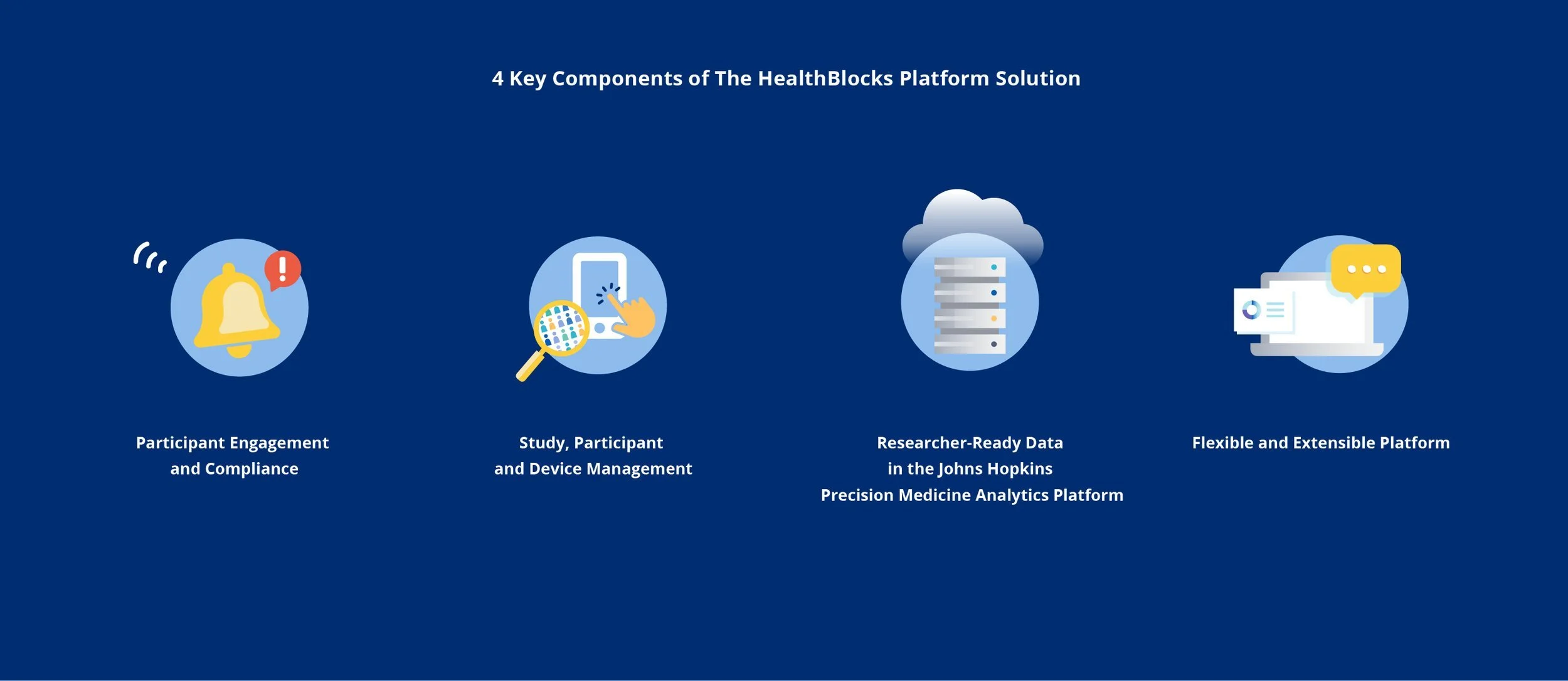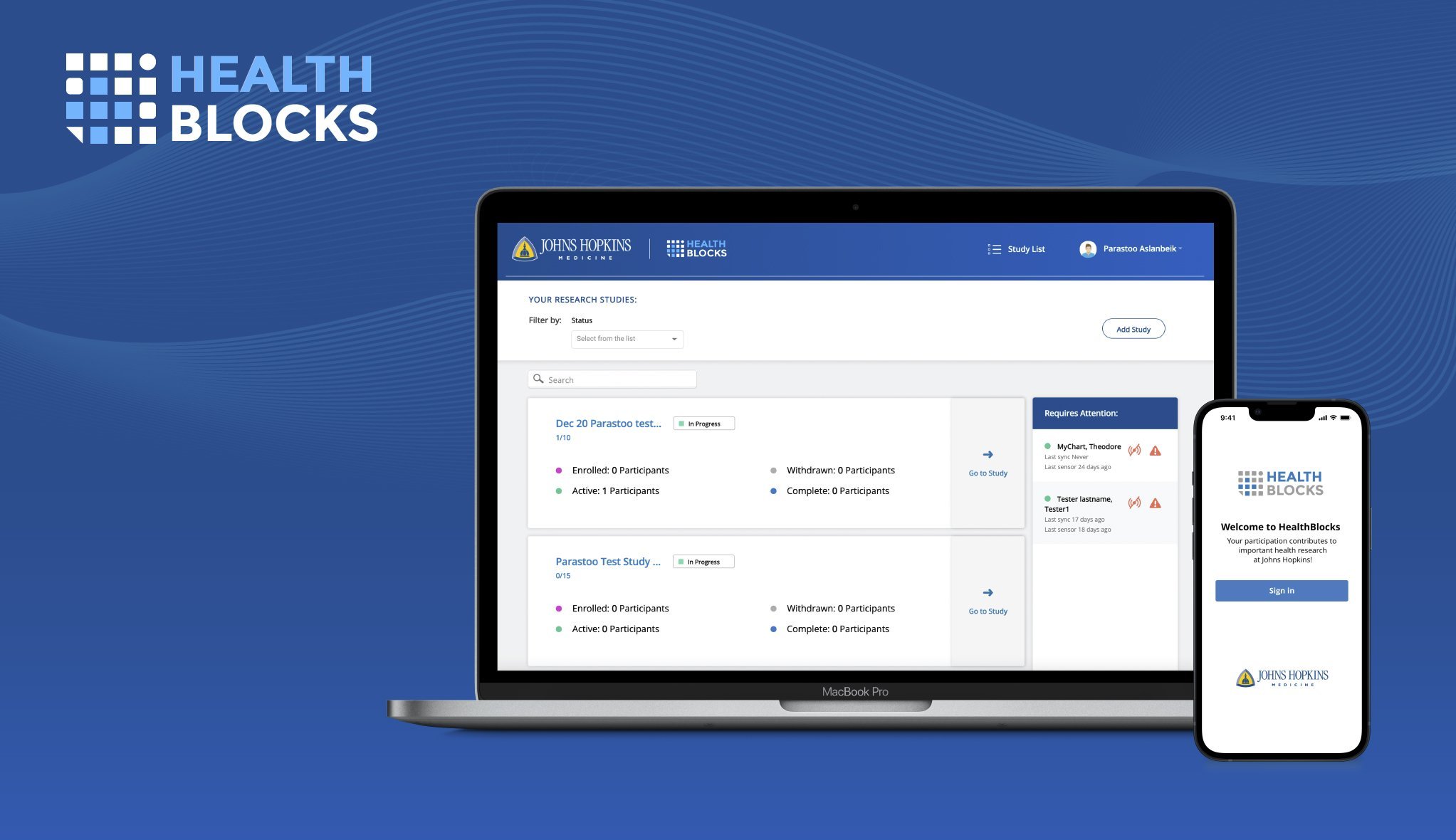
inHealthBlocks
(Formerly known as HealthBlocks)
Monitoring Wearables for Clinical Research
Summary
inHealthBlocks is a digital platform designed and developed by the Johns Hopkins Technology Innovation Center (TIC) in partnership with Microsoft to provide a seamless and more automated onboarding experience for patients who are participating in medical trials. The centralized dashboard management tool helps research study coordinators increase their efficiency and follow-through.
Read more about this Project on TIC’s Website, or TIC’s Medium Page
Role: Lead UX Designer
Year:
MVP Launch: December 2021
Phase 2: Launched in Fall 2023
Collaborated with:
Technology Innovation Center at Johns Hopkins Medicine: Product owners, project managers, software engineers, designers, clinicians, researchers, data scientists, research coordinators
Microsoft: Software engineers, software architects, technical project leads
The Problem
The traditional way of running clinical studies with medical wearables can be very time consuming and inefficient for both research study coordinators and participants. Currently coordinators need to use multiple platforms, spread sheets, etc. to keep track of participants’ activities. Also participants can get overwhelmed by the multiple steps they need to go through during the onboarding steps.
The Solution
The goal was to build an automated and seamless experience for participants and study teams. This platform has 2 applications:
1. A dashboard which is used by research coordinators to help them with monitoring participants’ activities through their medical wearables
2. A native mobile application for participants to facilitate their onboarding, connect them with study coordinators and display their participation progress.
inHealthBlock’s minimal viable product (MVP) is compatible only with fitbit devices. But it will support multiple medical wearable devices such as spirometers, scales, glucose and blood pressure monitoring devices, etc. in the future phases.
The dashboard:
Empowers study coordinators to prioritize higher value tasks. Within the MVP, coordinators can create studies, add participants and set-up devices in one platform. Additionally, they have capability to generate and oversee notifications and reminders tailored to their preferred communication channel, while also monitoring their activities.
Mobile App:
On the participant side, the mobile app provides a user friendly onboarding experience. Users have the ability to configure the preferred communication channel (SMS/email) directly within the app. Additionally, they can conveniently set up their medical wearables and access relevant information about their devices (only Fitbit for the MVP) from the inHealthBlocks mobile app.
UX Research
I started my discovery journey by conducting interviews (about 10 initial round of interviews) with 5 research coordinators from various departments at the Johns Hopkins Hospital. This helped me gain a better understanding of their process, pain points and needs. Learning more about the clinical study processes also helped with requirement gathering and prioritization of more necessary features for the MVP.
“I have to monitor every single patient, every day to make sure they are wearing their Fitbits. For that, I have to log in to all Fitbit accounts individually each day to check their Fitbit data.”
— Quote from a research coordinator Approach
-
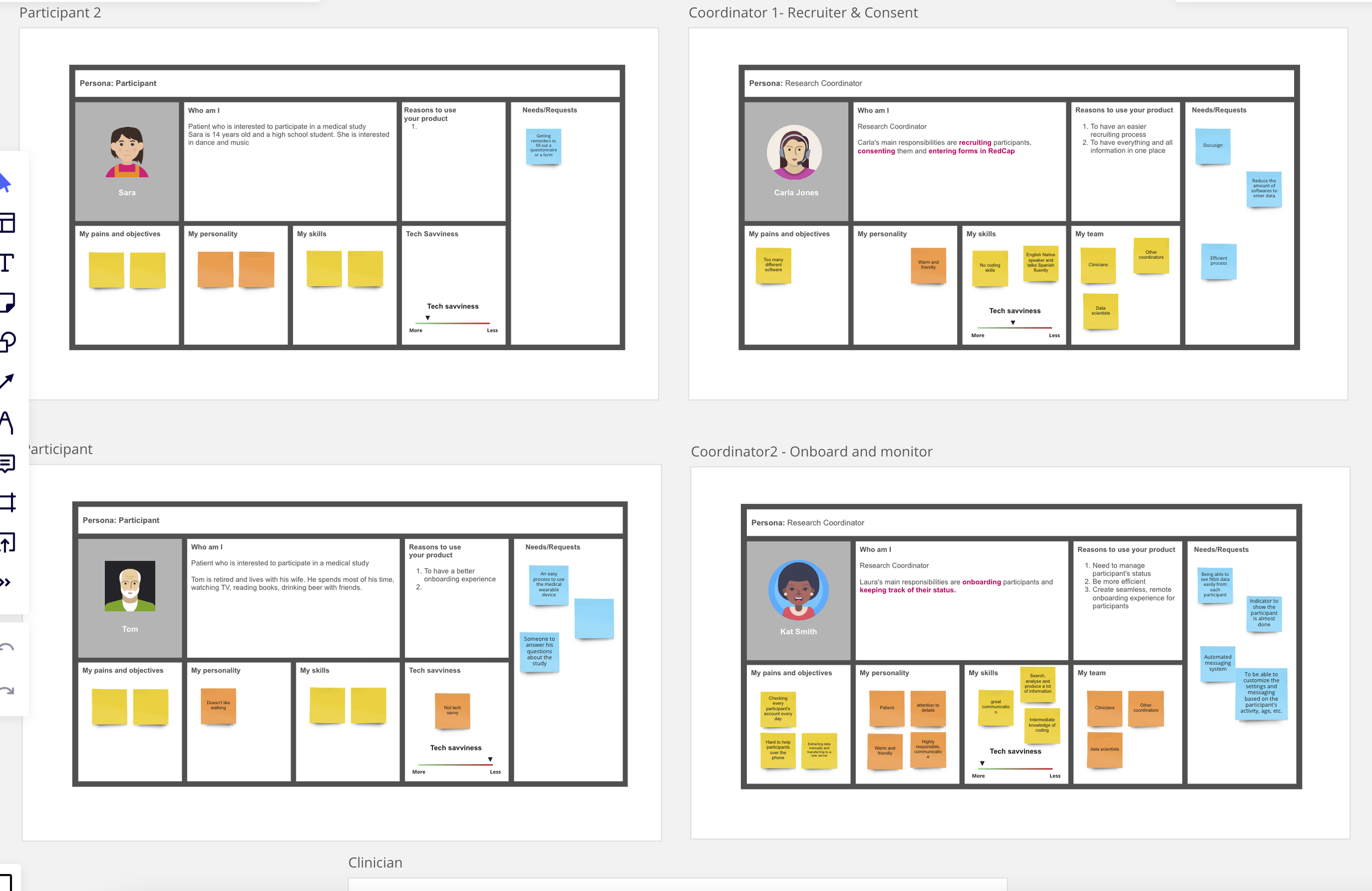
Persona
I created 5 personas based on our interviews and the group we targeted for this product. 2 coordinators, 1 Principal Investigator, 1 teenager as a participants and 1 middle aged user as a participant.
-
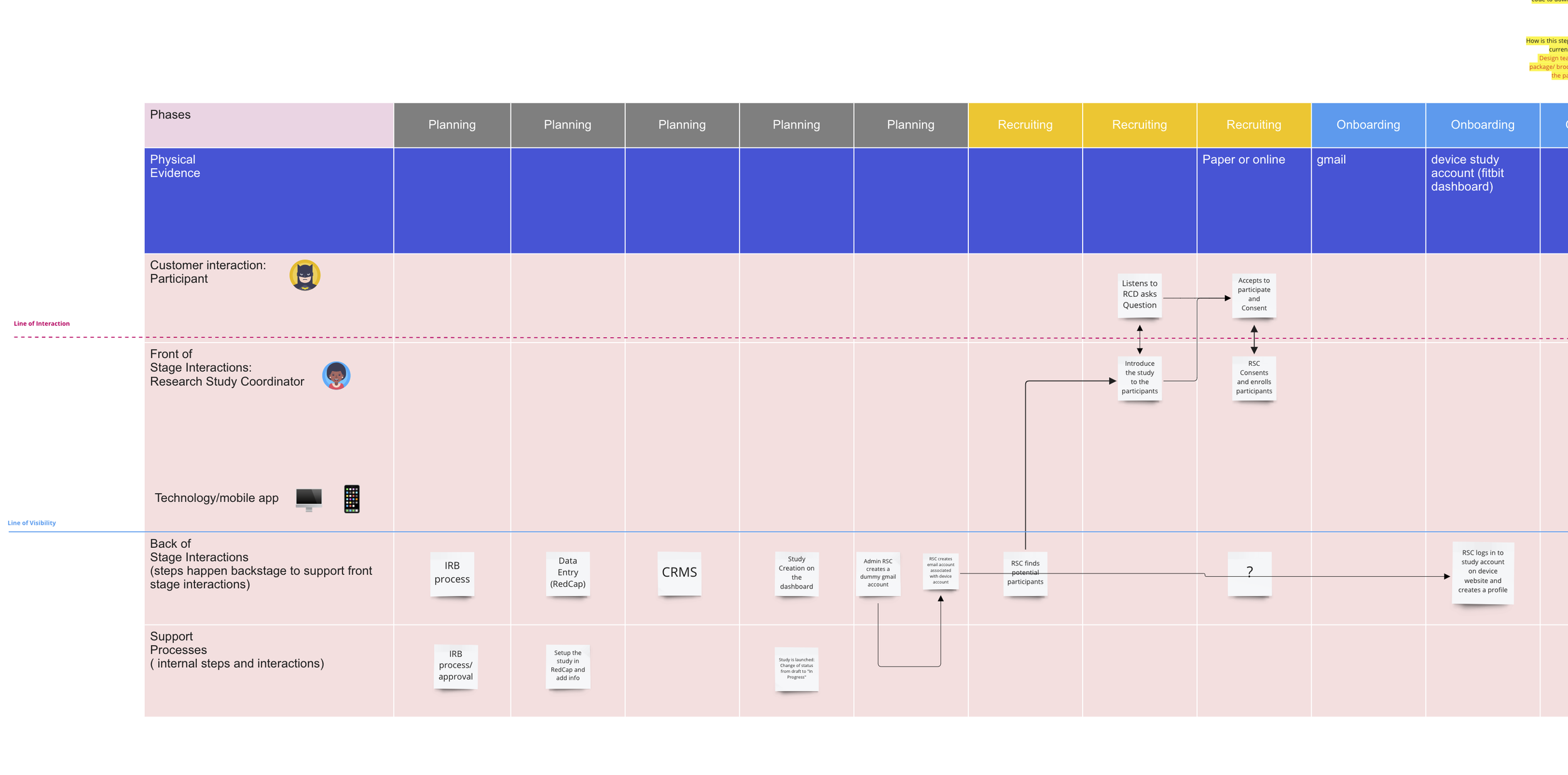
Service Blueprint
Created a service blueprint to identify various stages of the service and how inHealthBlocks can help filling the gaps.
-
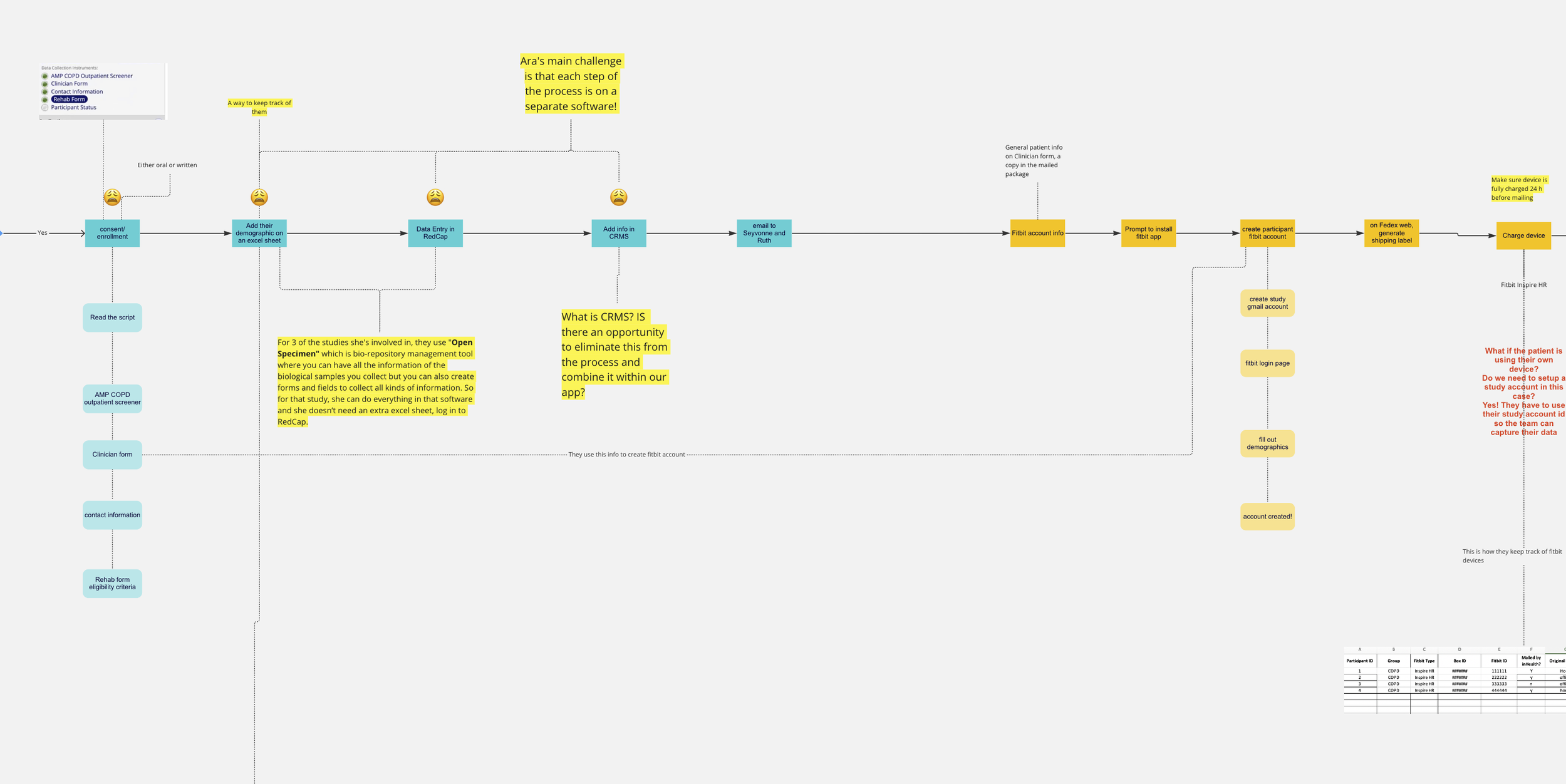
Task Flows
Task Flows: Process of recruiting, onboarding and monitoring participants by coordinators.
Learnings from interviews
Based on the interviews, I learned that the onboarding process is very inefficient. Coordinators use multiple platforms and tools to manage various aspects of their work. This results in time consuming tasks such as logging into each participant’s account daily to ensure compliance. I worked closely with 5 study coordinators to create task flows and a service blue print to better understand their workflow and identify opportunities for improvement.
Participant List & Activity Tracker
-
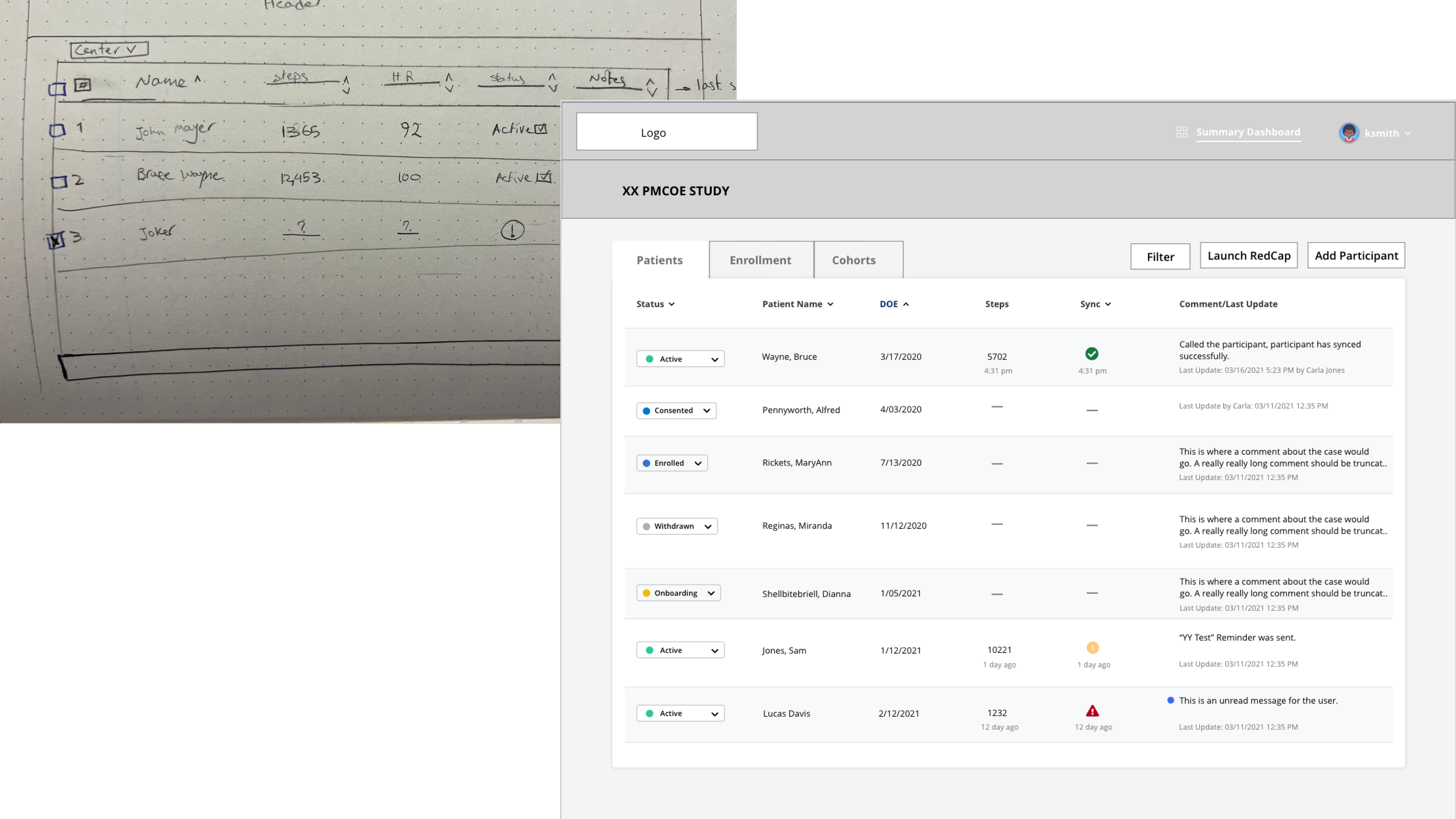
Low- Medium fidelity wireframes
-
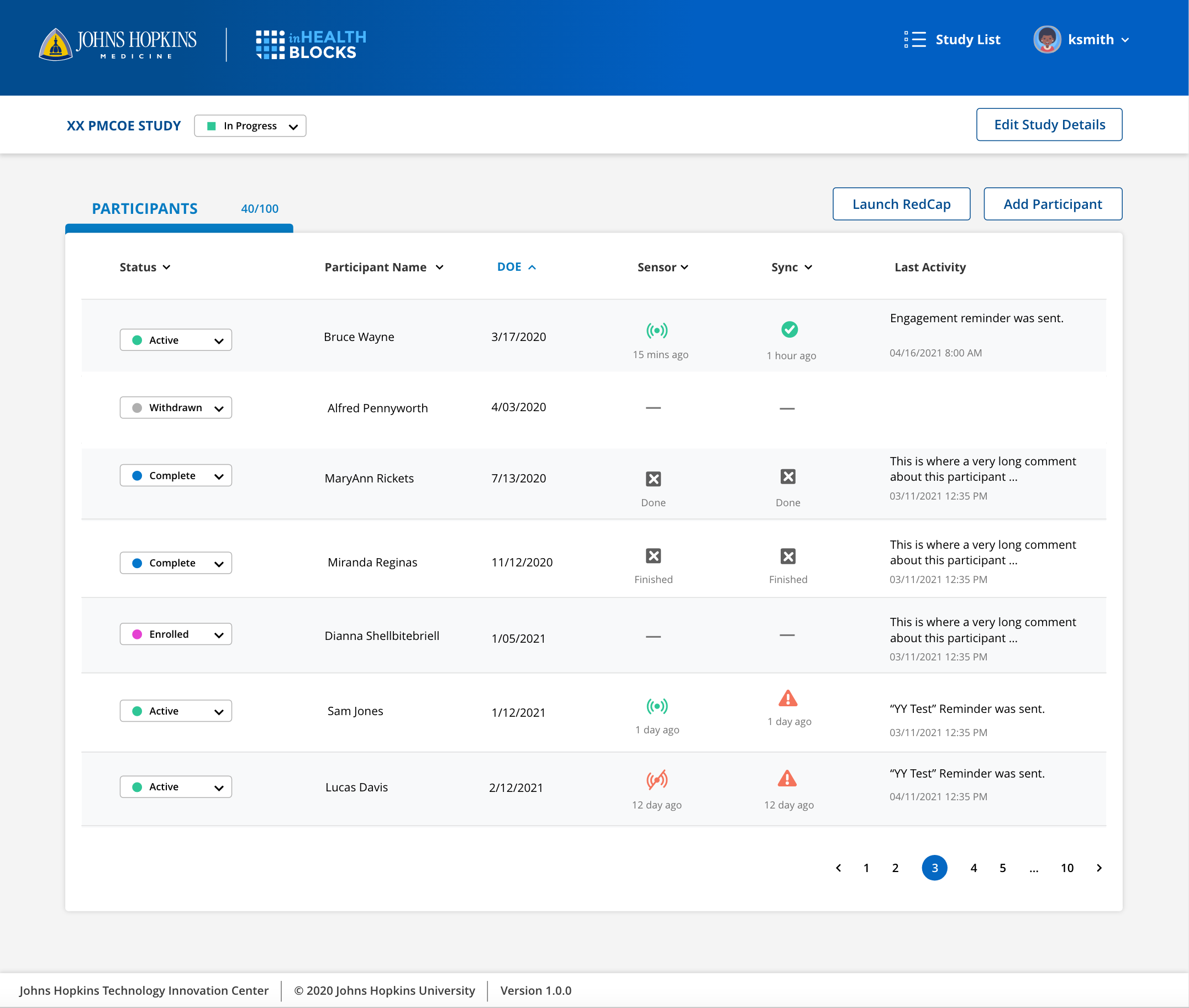
High fidelity wireframes
inHealthBlocks MVP
inHealthBlocks is currently in the early stages of development and the MVP has been tested.
The next phase of this platform product is going to support multiple wearable devices and will include some overall improvements both on the dashboard and the mobile app.
Lessons Learned
Scalability
Scalability is one of the most challenging problems to solve for this product. Each study team has specific requirements and sometimes these studies could recruit very large number of participants. It's challenging to make sure the user experience is still intuitive.
Engagement
Another challenge for study teams is to keep participants motivated and engaged. The rate of dropout increases after the first few months of a study.
Encouragement
Patients would love to see how their contribution is used for medical studies. Learning more about how they are helping study teams at Johns Hopkins could be very encouraging.
Where is inHealthBlocks now and what does the future look like?
inHealthBlocks went through a rebranding and now it is known as “Wearable Labs”. The Technology Innovation Center has once again teamed up with Microsoft to develop and implement the next version and I am serving as the UX lead for this project.
